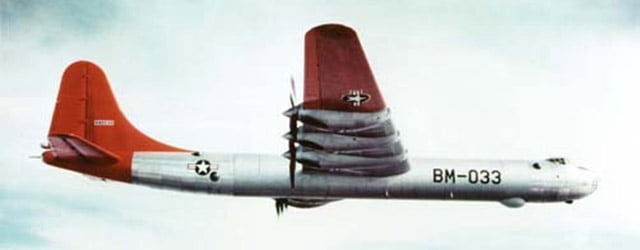What can be classified as the “worst case scenario in the nuclear age”, on February 14 1950, a US Air Force bomber crashed in British Columbia. The Convair B-36B, with a serial number 44-92075 was the first case of nuclear loss in history, and the B-36 was the first of many “broken arrows” that happened during the cold war. The bomber was not scheduled for attack. Instead, the bomber was on a practice mission, but after a massive engine failure, the crew of the bomber had to abandon the ship in mid-air.
At the time, it was unclear whether the bomber carried nuclear weapons, or whether they were disarmed before the plane crashed. And that is just one of the unanswered questions till now. Let’s take a look at some of the conspiracies that have surfaced after the plane crash. Just for information, the official US Air Force reports are that the bomber and the nuclear weapon are lost at sea.
Was the Bomb Still on Board?
One of the theories still being unanswered is whether the bomb was still on board when the plane crashed? The main theory, one that is supported by the US Defense department was that the core was not installed.
There is also a theory suggesting that the crew tried to drop the multi-ton bomb through the doors. However, this theory is far from plausible. With three engines not working, the more likely scenario is that the bomb stayed on board, but without the core installed.
Why did the engine crash?
The B-36 bomber was designed for the US Air Force to fight against Russia during the cold war. But one of the problems of the B-36 was carburetor icing. Americans never found a way to sort the carburetor icing in the B-36, which is one of the theories why the engines gave out.
The configuration of the carburetor in B-36 works in a way that the engine is mounted backwards. This way, with sub zero air during the flight, the carburetor gets blasted, and that is probably exactly what happened to the Convair B-36B.
Why The US Air Force Destroyed the Aircraft?
This was the first time, and probably the only time in the history of the US Air Force that the defense department went to the crash site, and destroyed the aircraft. The question, and the mystery remains, what were they trying to hide? Were they aware that the bomb was still there? Photos of the Canadian police reveals detonators on site. Another evidence that the bomb was on board is the bird cage, a red container specifically designed to carry the deadly plutonium core.
For the team that was on the plane, these facts are enough to suggest that the bomb was armed for a nuclear detonation. What happened during the incident? Was the bomb designed for attack? Or is it true that the bomber was carrying the bomb to safety and it was just a practice drill?
Where is the crew?
Five members of the crew died during the crash, while 12 survived. The problem with the remains was they were unable to be identified. The bodies of the five dead men were first found in 1952, when a fisherman hooked a parachute that was attached to a booted foot.
However, even though the remains of the dead soldiers were found, it wasn’t until 2012 that one of them was buried. In 2001, the daughter of Staff Sergeant Elbert Pollard asked for exhumation. The bones of the sergeant were identified, and 11 years, she finally got his father a proper burial. However, the remains of the four other soldiers have yet to be identified, and they have yet to receive their burial. The remaining 12 alive members are still trying to find out the mystery of the bomber. The pilot was the last one to leave the ship, as he ordered the crew of 16 members to leave, before he removed the core. At least that is the theory.
What happened to the weaponeer?
Weaponeer Ted Schreier was handpicked to be the third pilot on the bomber and the one responsible for keeping the bomb safe. He was the one that armed the Mark 4 nuclear weapon once the bomber was in air. However, he is the one that was not found on site, and is a mystery as much as the bomb itself.
No one of the crew members, including the pilot saw Ted bail out. No one could attest about him. Left with only one option, to jump and save their lives, the crew bailed out. But Ted was never found, and the question is whether he jumped or stayed on board to defuse the bomb?



